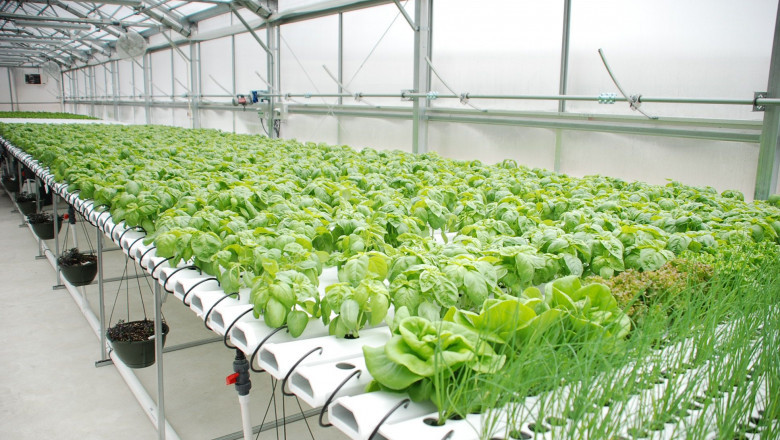views
Introduction
The hydroponics market is experiencing rapid expansion as demand for sustainable and efficient farming practices grows worldwide. As food security concerns rise and technological advancements make hydroponics more accessible, different regions are embracing this innovative cultivation method. This article explores the regional and global perspectives on the hydroponics market expansion, highlighting key trends, market drivers, and growth opportunities.
Regional Perspectives on Hydroponics Market Growth
-
North America
North America is a leader in hydroponic farming, driven by increasing urbanization, rising demand for organic produce, and advancements in agri-tech. The United States and Canada have seen significant investment in commercial hydroponic farms and vertical farming projects. Government initiatives supporting sustainable agriculture, along with consumer preferences for pesticide-free produce, are fueling growth in this region. -
Europe
Europe has emerged as a key player in hydroponics, with countries like the Netherlands, Germany, and the UK at the forefront. The Netherlands, known for its advanced greenhouse industry, has integrated hydroponics into large-scale commercial farming. European Union policies promoting sustainable agriculture and food security are further encouraging hydroponic farming. -
Asia-Pacific
The Asia-Pacific region is witnessing significant growth due to rapid urbanization, increasing population, and limited arable land. Countries such as China, Japan, and India are investing in hydroponics to address food security challenges. Japan, in particular, has embraced high-tech hydroponic farming to combat land scarcity, while India is promoting hydroponic farming as a solution for water conservation in agriculture. -
Middle East and Africa
The Middle East, with its arid climate and water scarcity issues, is increasingly adopting hydroponics as a sustainable farming solution. Countries like the UAE and Saudi Arabia are investing in large-scale hydroponic farms to reduce dependence on food imports. In Africa, hydroponic farming is gaining traction in urban areas and regions facing agricultural challenges due to climate change. -
Latin America
Latin America is gradually embracing hydroponics, particularly in Brazil, Mexico, and Argentina. The region’s focus on sustainable agriculture and increasing demand for high-yield farming methods are driving hydroponic adoption. However, infrastructure challenges and high initial investment costs remain barriers to widespread implementation.
Global Market Trends and Opportunities
-
Technological Advancements
Innovations in hydroponic farming, such as AI-powered monitoring systems, automation, and IoT-based nutrient management, are making hydroponic farms more efficient and scalable. These advancements are facilitating global expansion and adoption. -
Sustainability and Water Conservation
With growing concerns over climate change and water scarcity, hydroponics presents a sustainable solution by using up to 90% less water than traditional farming methods. Governments and organizations worldwide are investing in hydroponics to promote environmental sustainability. -
Urban Farming and Vertical Agriculture
The rise of urban agriculture is driving demand for hydroponic systems in cities worldwide. Vertical farming projects are becoming increasingly popular in densely populated urban areas, reducing transportation costs and carbon footprints. -
Investment and Government Support
Governments and private investors are actively funding hydroponic projects to enhance food security and promote innovative agricultural practices. Grants, subsidies, and research initiatives are creating a conducive environment for market growth. -
Expanding Crop Varieties
While leafy greens and herbs have traditionally dominated hydroponic farming, research is expanding the range of crops that can be grown using hydroponics. This includes fruiting plants, root vegetables, and staple grains, creating new opportunities for market expansion.
Future Outlook
The global hydroponics market is poised for continued growth, driven by technological innovations, environmental concerns, and shifting consumer preferences. As regions worldwide embrace hydroponic farming, collaboration between governments, investors, and agritech companies will be crucial in scaling sustainable food production solutions.
Conclusion
Hydroponics is rapidly expanding across different regions, addressing food security, sustainability, and agricultural efficiency challenges. With increasing investment, technological advancements, and supportive policies, hydroponic farming is set to revolutionize modern agriculture on a global scale. As market adoption continues to grow, hydroponics will play a vital role in shaping the future of food production worldwide.






















Comments
0 comment